
 Environmental Protection311
Environmental Protection311 Search all NYC.gov websites
Search all NYC.gov websites
Wastewater Treatment System
Wastewater Treatment Process

Every day, wastewater goes down the drains from homes, schools, businesses, and factories and flows into New York City’s Sewer System. In most areas of the city, the combined sewer system collects and conveys wastewater and stormwater runoff from streets, sidewalks, and rooftops, together to a wastewater resource recovery facility.
At our 14 Wastewater Resource Recovery Facilities, wastewater undergoes five major processes of treatment, which closely mimic how wetlands, rivers, streams, and lakes naturally purify water. After about 8–10 hours, our facilities remove pollutants from wastewater and release clean water into New York City Waterways. Today, our wastewater resource recovery facilities also recover energy, nutrients, and other resources from the treatment process.
For more information, download our Wastewater Treatment Process Graphic and take a look at our Education Resources for Wastewater Treatment.
Preliminary Treatment

Several stories underground, incoming wastewater, called influent, flows into the facility from the sewer system. As wastewater enters the facility, it passes through bar screens to remove leaves, twigs, and litter such as plastic bags, food wrappers, bottles, and sanitary wet wipes. We collect the trash and debris and then it is trucked to landfills. Main sewage pumps then pump wastewater from the screens up to the surface level of the facility.
Primary Treatment
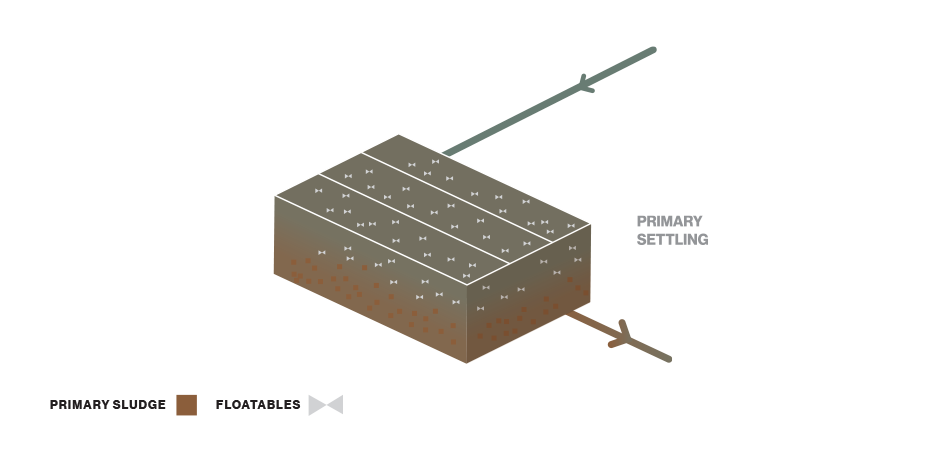
Next, the wastewater enters primary settling tanks where the flow of water slows down. We skim off the lighter solids that float, such as grease and small plastic material from the surface of the tanks. Meanwhile, sludge, or the heavier organic solids (feces, food, and paper fibers), begins to sink. We remove this primary sludge from the bottom of the settling tanks for thickening and digestion.
Secondary Treatment
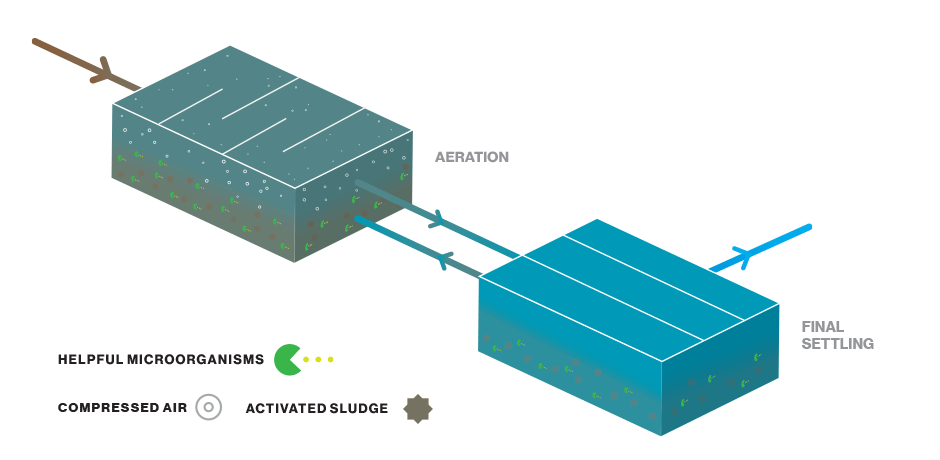
During secondary treatment, we add air to aeration tanks to foster a healthy environment for oxygen-loving microorganisms that are naturally present in the sewage. These helpful microorganisms consume much of the organic material in the wastewater, which yields heavier particles that can be removed more easily.
Aerated wastewater then flows to final settling tanks, where the heavier solids settle to the bottom. We remove most of this secondary sludge and combine it with the primary sludge for thickening and digestion. We return some of the secondary sludge to the aeration tanks to help maintain the right mix of helpful microorganisms and process incoming wastewater.
Disinfection
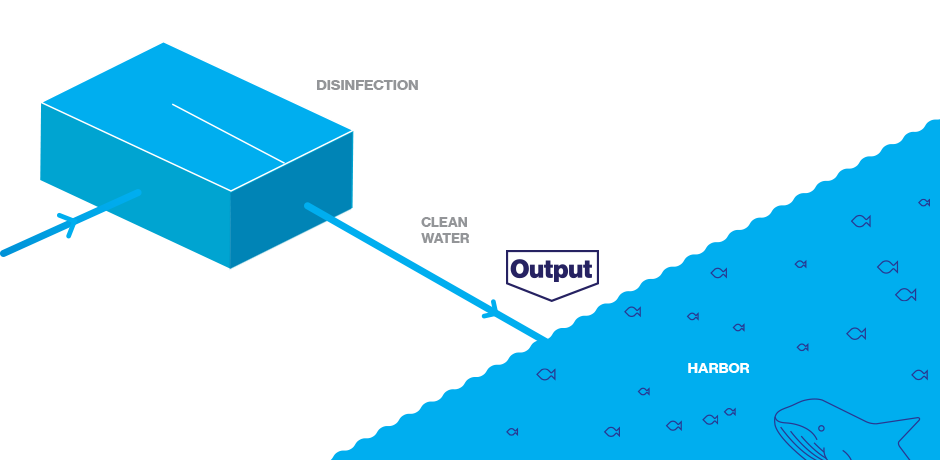
We add sodium hypochlorite, the same chemical found in household bleach, to disinfect wastewater and remove any remaining disease-causing microorganisms. We then release the treated wastewater, or effluent, as clean water into local waterways.
Sludge Treatment
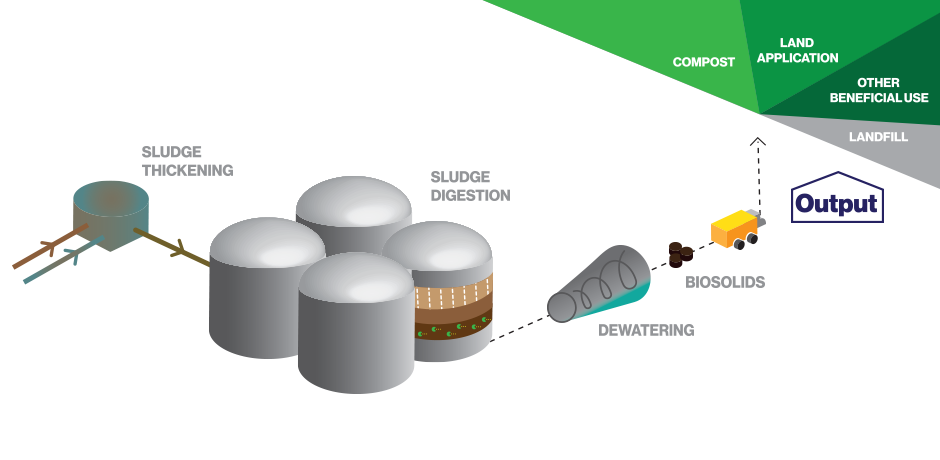
We thicken the sludge that we collected during primary and secondary treatment to further separate out water from the solid material. We place the thickened sludge into tanks called digesters, which maintain a low-oxygen environment heated to about 98°F. Microorganisms that thrive in this anaerobic environment digest the sludge and much of the material is converted into methane gas, also called biogas.
After about 15 days, the treated sludge goes through dewatering, which removes water from the solids using large centrifuges (like the spin cycle of a washing machine). We can dewater at six of our 14 wastewater resource recovery facilities. For the other eight facilities, we use marine vessels to transport the treated solids for dewatering. The remaining solids, called biosolids, can be composted, added to agricultural soils, or further processed for other beneficial uses.
Waste-to-Energy
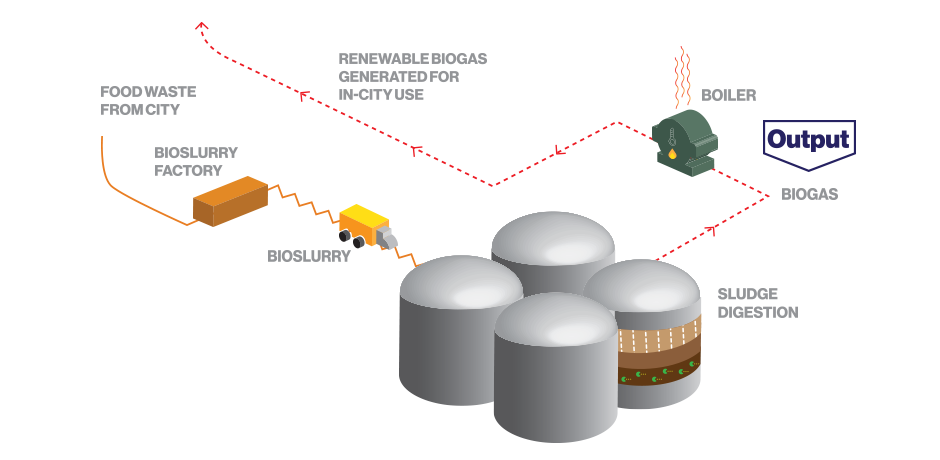
The biogas released during sludge digestion can be used to produce heat and electricity for the wastewater resource recovery facilities. Once purified it can be distributed as renewable natural gas for the community. Recovering and reusing biogas enhances clean air operations and significantly reduces greenhouse gas emissions from our wastewater resource recovery operations.
Currently, we are working with other city agencies and industrial partners to recover organic solids from the City’s waste stream. Food scraps are collected from grocery stores, restaurants, schools, and businesses and processed off-site into a nutrient-rich mixture called bioslurry. This material is mixed in with the sludge at our Newtown Creek Wastewater Resource Recovery Facility to help produce more biogas.
Learn more about Resource Recovery.


